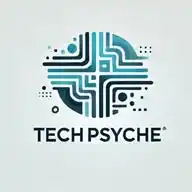
Tech Psyche
February 27, 2025 at 03:17 PM
*Want to become a Data Analyst?*
Here’s a roadmap with essential skills, tools & concepts you’ll need to master:
1. Data Fundamentals
* Statistics: Learn descriptive statistics (mean, median, mode), distributions, hypothesis testing, and correlation.
* Probability: Understand basic probability theory, including conditional probability, Bayes’ theorem, and probability distributions.
2. Data Cleaning
* Data Cleaning Techniques: Handling missing values, removing duplicates, and outlier detection.
* Data Transformation: Data type conversions, feature engineering, and handling categorical variables.
* Pandas: Master data manipulation with Pandas (merge, join, group, pivot).
3. Data Visualization (https://t.me/dataanalysisresourcestp)
* Data Visualization Libraries: Master Matplotlib, Seaborn, or Plotly for Python-based visualizations.
* Power BI / Tableau: Get hands-on with BI tools to create interactive dashboards and visual reports.
* Design Principles: Learn best practices for designing clear, effective visualizations.
4. SQL for Data Analysis (https://t.me/sqlresourcestp)
* Basic SQL: SELECT, WHERE, ORDER BY, GROUP BY, JOINs.
* Advanced SQL: Window functions, Common Table Expressions (CTEs), subqueries.
* Aggregation Functions: SUM, AVG, MIN, MAX, COUNT.
* Data Cleaning with SQL: Filtering, transforming, and merging data in SQL databases.
5. Excel for Data Analysis (https://t.me/dataanalysisresourcestp)
* Data Cleaning in Excel: Use functions like TRIM, CLEAN, SUBSTITUTE.
* Advanced Functions: VLOOKUP, HLOOKUP, INDEX-MATCH, IF, SUMIF, COUNTIF.
* Data Visualization in Excel: Create pivot tables, charts, and dashboards.
6. Programming for Data Analysis (Python or R) (http://t.me/pythonresourcestp)
* Python: Learn data handling and manipulation with Pandas and NumPy.
* R: Basic syntax, data manipulation with dplyr, and data visualization with ggplot2.
* Data Analysis Libraries: Pandas, NumPy, SciPy for Python or Tidyverse for R.
7. Exploratory Data Analysis (EDA)
* Pattern Recognition: Use EDA to identify patterns, trends, and correlations in data.
* Visual EDA: Use pair plots, heatmaps, and distribution plots for insights.
* Summary Statistics: Understand distributions, variance, and central tendencies of variables.
8. Business Acumen
* Domain Knowledge: Understand the industry-specific metrics relevant to your target job (e.g., finance, marketing, e-commerce).
* Data Storytelling: Learn to communicate findings clearly and effectively, connecting insights to business goals.
* KPI Analysis: Identify and measure key performance indicators for informed decision-making.
9. Data Collection & Sourcing
* APIs: Learn to pull data from APIs (e.g., REST APIs) using tools like Python’s Requests library.
* Web Scraping: Use tools like BeautifulSoup and Scrapy (be mindful of ethics and legality).
* Database Connections: Query databases and integrate SQL with Python or R for more extensive analyses.
10. Dashboarding and Reporting (https://t.me/dataanalysisresourcestp)
* Power BI / Tableau: Master the basics of dashboard design, interactivity, and sharing insights with stakeholders.
* Reporting Best Practices: Design reports that are clear, actionable, and easy for non-technical stakeholders to interpret.
11. Soft Skills
* Communication: Clearly present data insights and recommendations to stakeholders.
* Critical Thinking: Approach problems analytically to uncover insights.
* Collaboration: Learn how to work effectively within cross-functional teams, especially with non-technical colleagues.
Free Resources to learn Data Analytics (https://t.me/dataanalysisresourcestp/37)
Top-notch Data Analytics Resources (https://topmate.io/learning_resources/1456762)
Power BI Interview Questions (https://dev.to/henryclapton/top-15-advanced-power-bi-interview-questions-2942)
Data Analyst Learning Plan (https://t.me/dataanalysisresourcestp/36)
Like for more data analytics resources ❤️
ENJOY LEARNING👍👍
Join for more free resources
https://t.me/TechPsyche
❤️
👍
🔥
9